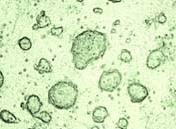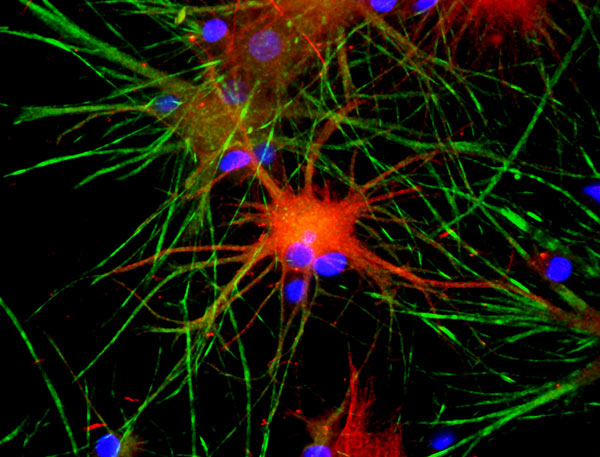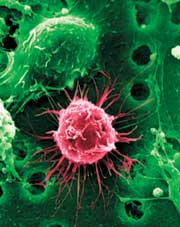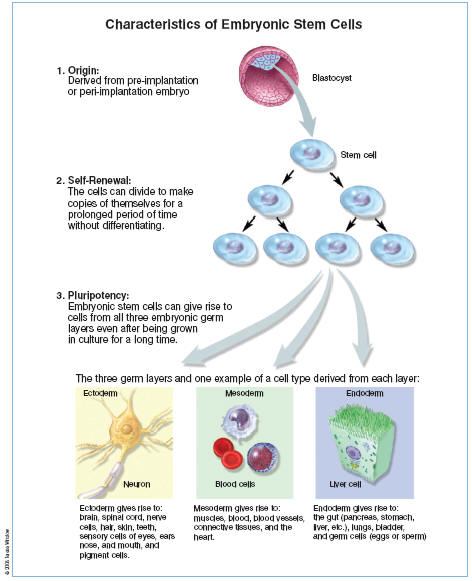






All stem cells share three basic properties. These properties of stem cells have been tested in various conditions with consistent results. It was therefore concluded that the properties are intrinsic to the stem cells themselves and not dependent on their environment. (Princeton University, 2005)
Ability to self-replicate
Normal adult cells such as nerve, blood and brain cells do not undergo cell division. Stem cells, however are able to replicate for very long periods of time without changing, as shown in Figure 1. (NIH & DHHS, Stem cell basics, 2006) However, there are various levels of differentiation of stem cells. As stem cells become more differentiated they are able to proliferate for less time, until they become fully differentiated cells which do not self-replicate. (Univeristy of Wisconsin-Madison, Embryonic stem cells, 2006) As a result, adult stem cells cannot proliferate for as long as embryonic stem cells which are less differentiated. Scientists are still studying the specific conditions that allow stem cells to replicate indefinitely without differentiating. (NIH & DHHS, Stem cell basics, 2006)
Unspecialized cells
Stem cells are unspecialized cells. They do not look or act like any adult cell. There is no one specific cell type that they are certain to become. (Yu & Thomson, 2006) Stem cells do not tend to have any structures or functions that are specific to certain kinds of adult cells. For example, they cannot send electrical signals like nerve cells can. (NIH & DHHS, Stem cell basics, 2006) The stem cells have no purpose other than developing into adult cells.
Can differentiate into many different types of cells
There are over 200 specialized types of cells in the human body (Health Canada, 2004). Stem cells are called pluripotent meaning they can differentiate into almost all cell types or multipotent meaning they can differentiate into many types. Figure 1 lists many cells that embryonic stem cells differentiate into. Stem cells in adults tend to be slightly more specialized than those in embryos and so are called multipotent rather than pluripotent. Scientists still do not understand very well the conditions necessary to differentiate stem cells into different types of cells. These conditions may be internal signals from genes, external signals such as chemicals secreted by other cells, physical contact, or other molecules in the environment, or they may be a mixture of both. (NIH & DHHS, Stem cell basics, 2006)